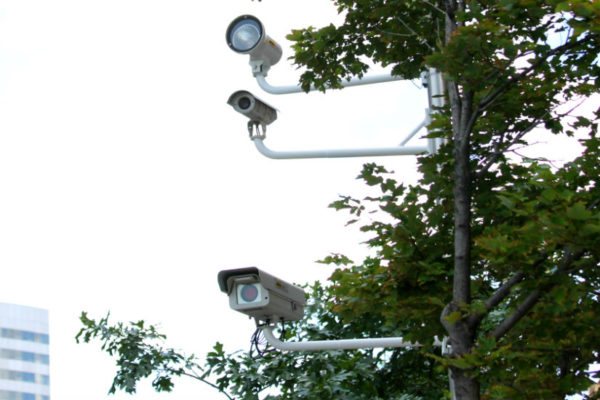New cameras enforcing speeding could be coming to Arlington school and work zones by the end of this year.
The County Board voted on Saturday to have speed cameras installed throughout the county near schools and on public roads where construction work is ongoing.
Board members heralded the cameras as a tool for protecting children, lowering severe and fatal crashes — an initiative known as Vision Zero — as well as reducing race- and ethnicity-based disparities in traffic enforcement and providing relief to overworked Arlington County Police Department officers.
“The idea that we can keep our community safer, address this behavior and then reduce demand on the police and reduce interactions with police is just a really heartening step for us to take,” said Board Chair Katie Cristol.
The vote follows the passage of state law in 2020 allowing municipalities to install speed cameras.
It also coincides with an anecdotal increase in speeding around schools, according to Board member Libby Garvey (although speed-related crashes in school zones have remained relatively constant at 10 per year, per county data).
“Maybe there hasn’t been a huge increase in crashes, but there has been an increase in bad behavior, and that’s pretty worrisome,” she said. “This is about children and safety.”
Last fall, Arlington County took steps to make school zones safer by lowering speed limits to 20 mph around 13 schools.
County staff are reviewing best practices, crash data, equity concerns and other local factors to determine where to place the cameras, Vision Zero project manager Christine Baker told the County Board. School zones encompass a 600-foot radius of a school crosswalk or school access point.
“We plan to be strategic and intentional about where we place speed cameras to ensure they’re effective in reducing speeds and promoting fairness and equity as well,” Baker said.
Board members said this should reassure motorists who also travel in D.C. and feel that camera locations are chosen to “trap” them and generate revenue rather than correct behavior.
Here’s what drivers need to know.
When will the program start?
Locations could be selected by this fall and the program could start as soon as cameras and warning signs are installed, either this winter or in early 2023.
Who will get citations?
Anyone going 10 miles per hour over the speed limit. Every citation will be issued after a sworn ACPD officer reviews the footage.
How much will citations cost? What are the other penalties?
Citations for the first 30 days of the program will be warnings that carry no fines. After that, they are $50 a fine, the same as red light-camera violations. The fines will go into the general fund.
Violations will be civil, not criminal, meaning they won’t add points to a person’s driver’s license or be considered for insurance purposes. Drivers can contest the violations.
How much will the program cost?
The program will cost $600,000 a year, and for now, ACPD anticipates the fines will offset the program’s costs, Capt. Albert Kim told the County Board. The costs include the purchase of 10 cameras, which can be moved, camera installation, program operations, ticketing and the salary of the full-time police employee reviewing the footage.
Where can I learn more about speed cameras?
Information in multiple languages will be available on the county website. The county will increase communication about the program through community email lists and the communication channels of APS and ACPD as the start date draws closer.
How will my data be protected?
State law requires Arlington police and the third-party vendor to delete footage and shred physical documents with personally identifiable information within a certain time frame: 60 days of reviewing the footage and determining the driver wasn’t speeding, or within 60 days of a driver paying a fine, Kim said.
Could the program change in the future?
Yes, but it will require more state legislation. The County Board has asked the state to expand the use of speed cameras beyond school and highway work zones, and on Saturday, Board members put forward other ideas for fining and penalizing motorists who speed.
Board Vice-Chair Christian Dorsey suggested requiring service as a school zone crossing guard, which would alleviate the county’s “inadequate supply of crossing guards.”
“We do know that, for many people, a $50 fine is an irritant, not a problem. I want to make sure that we don’t have people who engage in this repeat activity without understanding the consequences,” he said. “On the flip side, there are people for whom $50 is a severe problem. I would love for them to be able to fulfill their obligation to us in a meaningful way that doesn’t jeopardize their security.”
Board member Takis Karantonis said the state should grant greater flexibility in calculating fines, rather than provide a flat maximum of $100. He said fines should be calculated based on three factors: how far over the speed limit the driver was going, how many times the driver has been caught speeding and the driver’s income.


